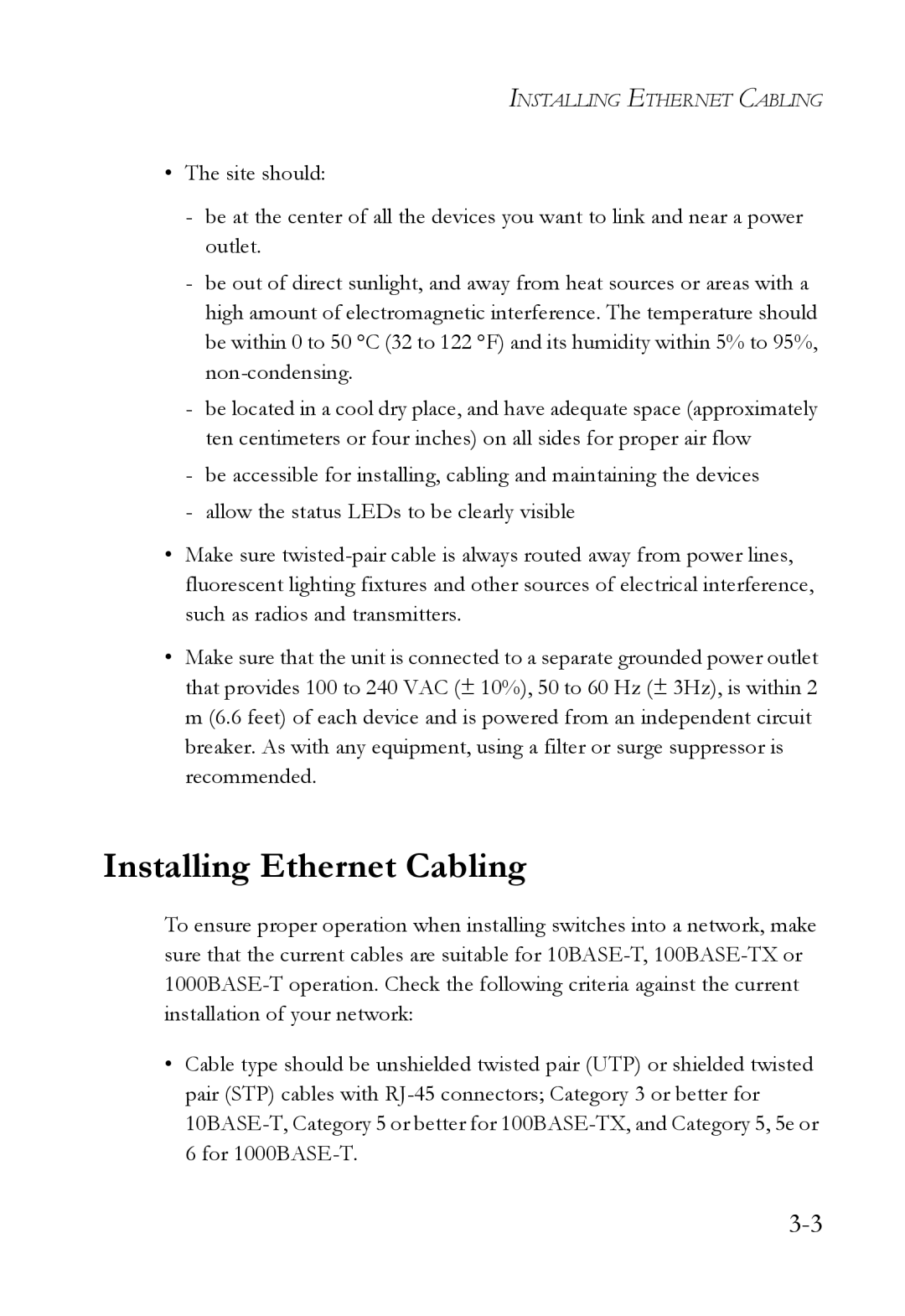INSTALLING ETHERNET CABLING
•The site should:
-be at the center of all the devices you want to link and near a power outlet.
-be out of direct sunlight, and away from heat sources or areas with a high amount of electromagnetic interference. The temperature should be within 0 to 50 °C (32 to 122 °F) and its humidity within 5% to 95%,
-be located in a cool dry place, and have adequate space (approximately ten centimeters or four inches) on all sides for proper air flow
-be accessible for installing, cabling and maintaining the devices
-allow the status LEDs to be clearly visible
•Make sure
•Make sure that the unit is connected to a separate grounded power outlet that provides 100 to 240 VAC (± 10%), 50 to 60 Hz (± 3Hz), is within 2 m (6.6 feet) of each device and is powered from an independent circuit breaker. As with any equipment, using a filter or surge suppressor is recommended.
Installing Ethernet Cabling
To ensure proper operation when installing switches into a network, make sure that the current cables are suitable for
•Cable type should be unshielded twisted pair (UTP) or shielded twisted pair (STP) cables with
